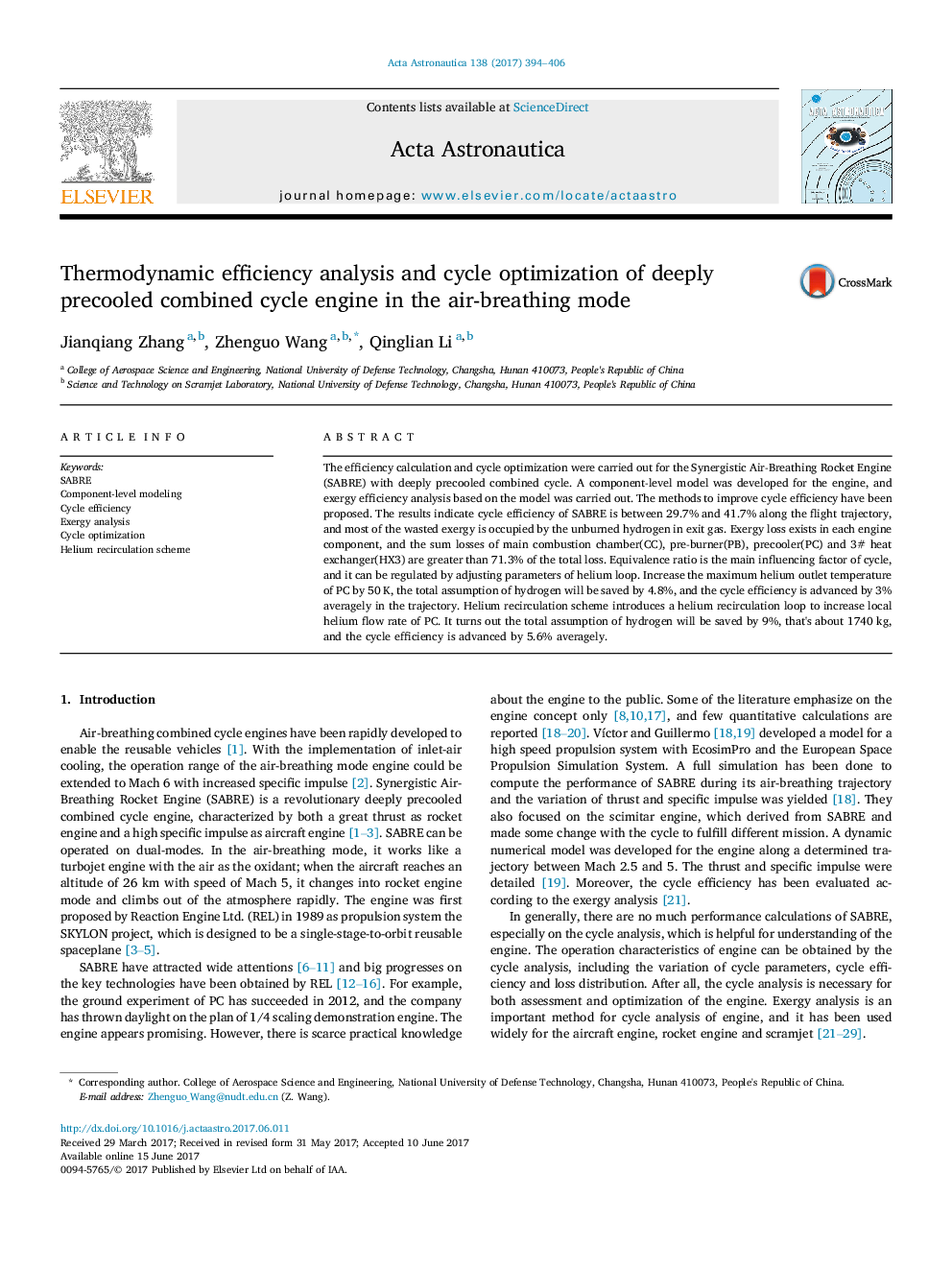| Article ID | Journal | Published Year | Pages | File Type |
|---|---|---|---|---|
| 5472342 | Acta Astronautica | 2017 | 13 Pages |
Abstract
The efficiency calculation and cycle optimization were carried out for the Synergistic Air-Breathing Rocket Engine (SABRE) with deeply precooled combined cycle. A component-level model was developed for the engine, and exergy efficiency analysis based on the model was carried out. The methods to improve cycle efficiency have been proposed. The results indicate cycle efficiency of SABRE is between 29.7% and 41.7% along the flight trajectory, and most of the wasted exergy is occupied by the unburned hydrogen in exit gas. Exergy loss exists in each engine component, and the sum losses of main combustion chamber(CC), pre-burner(PB), precooler(PC) and 3# heat exchanger(HX3) are greater than 71.3% of the total loss. Equivalence ratio is the main influencing factor of cycle, and it can be regulated by adjusting parameters of helium loop. Increase the maximum helium outlet temperature of PC by 50Â K, the total assumption of hydrogen will be saved by 4.8%, and the cycle efficiency is advanced by 3% averagely in the trajectory. Helium recirculation scheme introduces a helium recirculation loop to increase local helium flow rate of PC. It turns out the total assumption of hydrogen will be saved by 9%, that's about 1740Â kg, and the cycle efficiency is advanced by 5.6% averagely.
Related Topics
Physical Sciences and Engineering
Engineering
Aerospace Engineering
Authors
Jianqiang Zhang, Zhenguo Wang, Qinglian Li,
